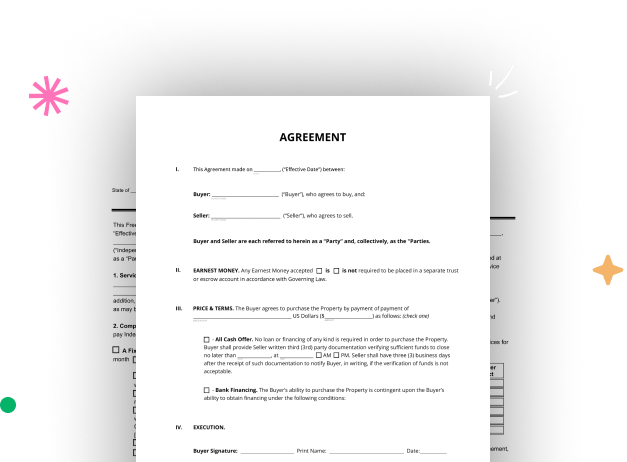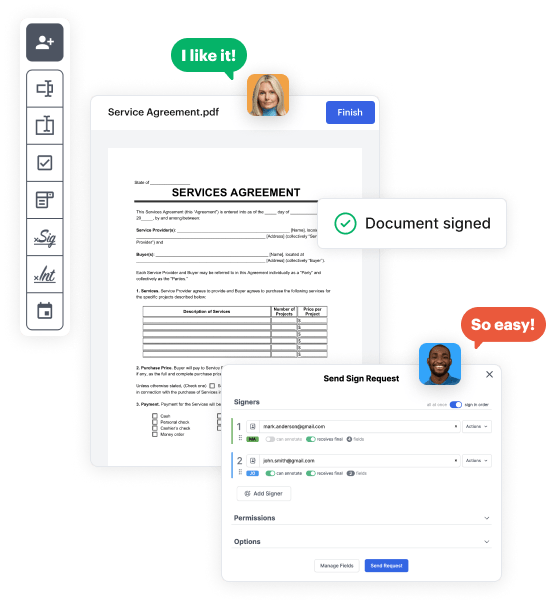

Go to the DocHub website and register for the free trial. This provides access to every feature you’ll require to create your Contractor Agreement with no upfront cost.
Sign in to your DocHub account and proceed to the dashboard.
Click New Document in your dashboard, and select Create Blank Document to create your Contractor Agreement from scratch.
Place various elements such as text boxes, radio buttons, icons, signatures, etc. Organize these elements to suit the layout of your form and designate them to recipients if needed.
Rearrange your form in seconds by adding, moving, removing, or merging pages with just a few clicks.
Transform your newly crafted form into a template if you need to send multiple copies of the same document numerous times.
Send the form via email, share a public link, or even publish it online if you aim to collect responses from more recipients.